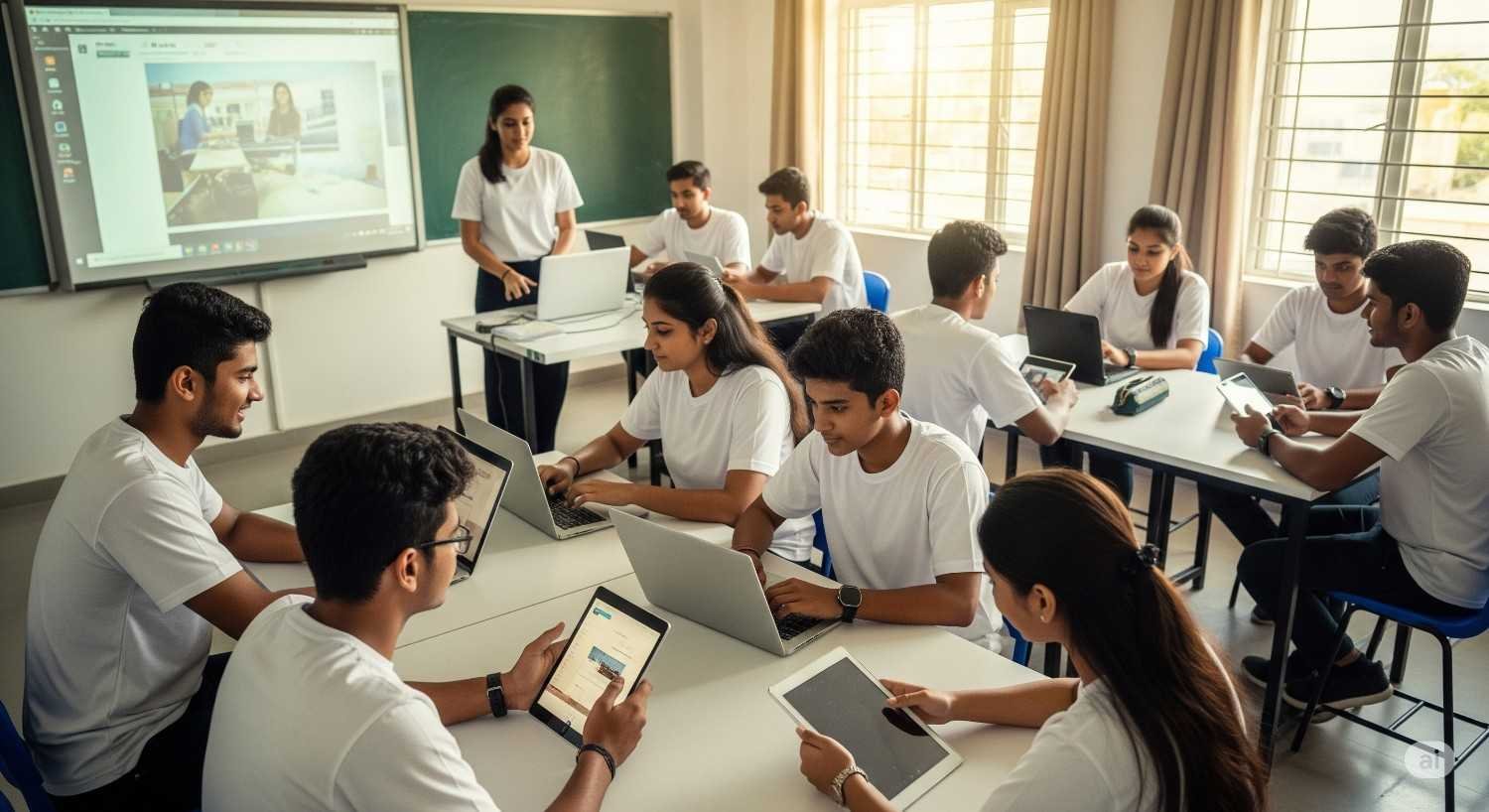
The Impact of Digital Literacy on Student Success
In today's fast-paced, digital world, it is very crucial for students to have the ability to surf online resources effectively. Digital Literacy empowers us to access, evaluate, and create information using variety of digital technologies. As pedagogy increasingly shifts towards online platforms, understanding the impact of digital literacy on student success has become essential. This blog explores the ways digital literacy contributes to scholastic achievements, understanding netizens, unifying differences and building futures, and strategies for building a strong online presence.
Understanding Netizens
An important part of digital literacy is awareness to connect with and communicate effectively across different netizens. It is essential for students to identify variety of communication styles, preferences, and expectations across multiple platforms. Whether it is to create content, participate in online discussions or classrooms, submit assignments, or collaborate on group projects, one must be skilled at tailoring their content to resonate with their intended cyber audience.
Moreover, knowing your cyber audience can enhance critical thinking skills. Students learn to analyze information, consider different perspectives, and respond appropriately, which are vital competencies in both academic and professional settings. Developing these skills help students to improve their scholastic skills while arming them for future careers that demand strong communication abilities.
Unifying Differences and Building Futures
1. Discovering Access to Learning Resources:Online learning resources such as encyclopedias, educational websites, digital materials, video tutorials, interactive apps, and online courses offer students the liberty to learn at their own pace. This democratization of knowledge is especially crucial for students in underserved communities. Digital literacy allows them to fill the gaps and take command of their learning journey.
2. Fostering Critical Thinking and Media Awareness: In a world where fabricated information spreads speedily, students must check and analyze the facts before consuming the digital content. Digital literacy enables learners to distinguish trustworthy sources from unreliable ones, analyze media content, and recognize bias on the internet.These skills vests students to make conversant decisions and become accountable digital citizens.
3. Stimulating Cognitive Development Through Interactivity: IEducational technology often includes games, simulations, and creative software that promote exploration and problem- solving. These technologies utilize multiple learning styles that assist students grasp difficult concepts through visual and hands-on experiences.
4. Encouraging Online Safety and Digital Responsibility: With the continuous growth in cyber threats, it becomes mandatory for the students to learn how to safeguard themselves online. Digital literacy imparts knowledge about safe browsing habits, password hygiene, and dealing with cyberbullying. This helps students to be more secure, ethical, and participate mindfully in digital environment.
Establishing a Strong Online Presence
In an increasingly digital academic landscape, building a strong online presence is essential for student success in academic environment. Building a strong online presence can open doors to networking, internships, and joint projects. Students can use the following tactics to develop their online presence:
1. Create a Professional Profile: Students can create their profiles in platforms like LinkedIn to exhibit their skills, experiences, and accomplishments. A well-presented profile has high chances to get noticed by prospective employers and collaborators.
2. Participate in Online Communities:Students can connect with their peers to share insights and can gain valuable knowledge by participating in forums and groups pertaining to their field of study. This engagement not only enhances learning but also fosters a feeling of community.
3. Exchange Expertise and knowledge:Students can establish themselves as thought leaders in their field by blogging or creating content that relates to their academic interests. It not only boosts their confidence but also highlights their expertise to potential employers.
4. Use Social Media Sensibly:Students should be mindful of how they appear in social media, and ensure that their profiles reflect professional image. Their online visibility and credibility can increase by sharing academic achievements, projects, and relevant articles on social media.
5. Seek Feedback and Adapt:Another aspect of digital literacy is that it involves the ability to seek and act on constructive feedback about one’s online persona. To ensure ongoing progress, students should be willing to modify their approaches in response to feedback.
Conclusion
In today’s educational environment, digital literacy is an essential ability that has significant impacts on students’ success. Students can improve their learning experiences and prepare for future career opportunities by understanding their audience and building a robust online presence.
Fostering digital literacy will be crucial to enabling students to succeed academically and profes sionally as we continue to navigate an increasingly digital world. Developing these abilities helps people on a personal level and contributes to the creation of a society that is more informed and capable.

